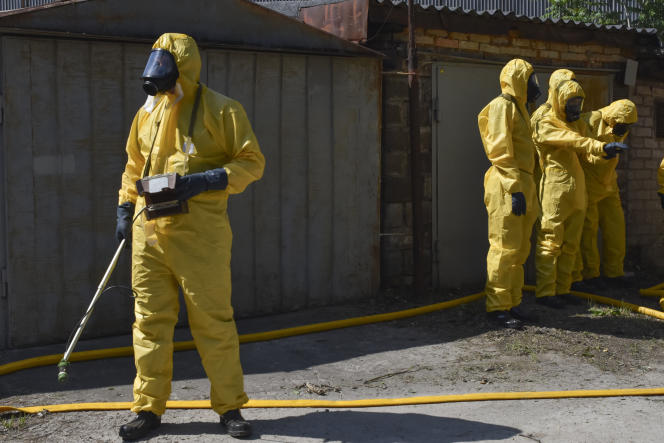Centimeter after centimeter, the tank empties. At 6 p.m., Wednesday June 7, he had already lost 2.8 meters to fall to a height of 14.03 meters. Since the partial destruction, on the night of June 5 to 6, of the Kakhovka dam in southeastern Ukraine, the level of the vast water reservoir it formed on the Dnieper River has been scrutinized with apprehension. : this reserve represents the main source ensuring the cooling of the nuclear power plant of Zaporizhia, located upstream.
From the first hours after the dam burst, the International Atomic Energy Agency (IAEA) dismissed the fear of an imminent nuclear accident, which would have added to the human and environmental catastrophe. “There is no immediate nuclear danger”, reassured its general manager, Rafael Mariano Grossi. The damage inflicted on the installation, however, further weakens the security of the site, occupied by Russian forces. For more than a year, the UN agency has constantly warned of the extremely precarious context in which the plant operates, affected by repeated power cuts, clashes and very strong pressure exerted on the staff. Ukrainian. ” Obviously, [la destruction du barrage] makes the nuclear safety and security situation even more difficult and unpredictable”insisted Mr. Grossi, who should go to Zaporizhia again in the coming days.
While flooding is forcing thousands of civilians to leave their homes south of the dam, to the north it is falling water levels that pose the main threat. The Zaporijia power plant is located on the left bank of the Dnieper River, approximately 150 kilometers upstream from the structure. Even when they are shut down, as has been the case for several months, its six reactors must be permanently cooled to avoid core meltdown, which could lead to radioactive releases.
Normally, water is pumped into the tank to supply the installation’s cooling circuit. But if the level of the water reservoir drops below 12.7 meters, the pumps will no longer be able to operate. “At the current rate, this level could be reached within the next two days”said Wednesday evening the IAEA, several inspectors of which have been permanently present on the Zaporizhia site since September 2022.
Plant hit by bombardment
You have 59.1% of this article left to read. The following is for subscribers only.
